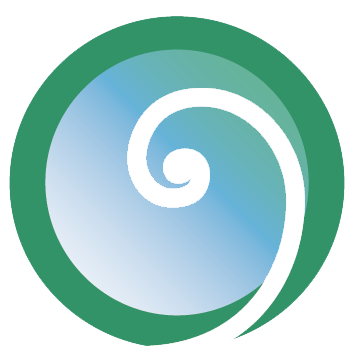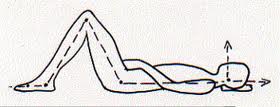The spine is the central column of support and the core energetic pathway in our bodies. At Way Opens I teach Alexander Technique as a way to learn how to access this central support and move according to its design. In lessons, we focus on freeing up the spine, allowing it its full length and renewing its supple, flexible nature. Thinking up, inhibiting downward pull or collapse, and rediscovering the poise of the head in movement -- these are all excellent ways to encourage the body to reorganize itself so that activities are easier and more enjoyable.
But do you really know anything about your spine? If you don't have the facts, if your inner body map is badly drawn, you will have a much more difficult time moving in harmony with its design. Over the years, I have heard students say things like:
- I am trying to straighten my spine
- My spine is my backbone, right?
- The spine runs from my lower back to my shoulders
- I inherited a crooked/collapsed/overly curved/arthritic/weak spine, there is nothing I can do about it, it's genetics
- My spine is like a flag pole and everything hangs off of it
Nonsense. Simply not true. Unfortunately, if you go through life thinking these and other untrue ideas about your spine, that is how you will try to move. To give just one example, if you believe that what we call the "backbone" is the extent of your spine, you will try to get that "backbone" to do all the work of weight support and movement, way back in the farthest reaches of your torso. Your back muscles will find this exhausting and soon give up, leading to downward pull and collapse.
It is essential, therefore, to get to know the anatomy of your spine. Luckily for all of us, my colleague Sarah Chatwin has written a wonderful, practical article describing the details of this amazing structure that sets us apart as a species.
Five-and-a-Half Things You Need to Know About Your Backbone
We humans come equipped with some fairly amazing infrastructure. Here’s five and a half spine facts to help you love your back just a little bit more:
1. All present and correct?
There are 33 vertebrae in an average human spine. Vertebrae are the bony parts of your spine.
Your cervical spine, aka your neck, has seven vertebrae. As all good Alexander Technique students know, the very top of your spine is right up between your ears, not languishing down around your collar somewhere.
Next comes your thoracic spine. That’s the twelve vertebrae that are joined by ribs to form your ribcage.
Your spinal cord runs down from your brain stem, through the cervical and thoracic spine to just below the ribcage. It doesn’t go the whole way down.
Below that is the lumbar spine, which is made up of five large vertebrae.
Next, the sacrum, which is five vertebrae fused together to form the back of your pelvis. The vertebrae are separate when you are born, and don’t completely fuse until around age 26.
Last but not least, your coccyx or tailbone. Four fused bones, but still technically part of your spine. Tailbones are like noses in that they can be very different from each other. Yours may be twice the size of your neighbours’, or half the size, or point a different way.
Not everyone has all these vertebrae. Some people have extras. Others have some missing. Some people have vertebrae in strange shapes, or fused together where they shouldn’t be. As you might imagine, that can cause all sorts of trouble. If you have a standard issue spine, be grateful.
2. Location, location, location
Run your hand along your cervical or lumbar spine. The part you can feel isn’t the main body of the vertebrae.
Each vertebra has three arms. Two stick out to the sides, one sticks out to the back. What you can feel is that little arm that sticks out the back.
That means that the main part of the vertebrae is further inside you – more towards your centre – than you probably thought.
3. Size matters
Imagine a pile of citrus fruit, as tall as your spine from the lumbar upwards. Grapefruits at the bottom, then oranges, satsumas and finally clementines. Got it?
That’s the dimensions of an average human spine as a working unit, not a skeleton: vertebrae plus nerves, muscles, ligaments and all the other equipment. Pretty chunky isn’t it?
4. Shock treatment
Two things give your spine its shock absorbing properties.
Between the vertebrae are the (in)famous discs. These are tough, fibrous pieces of cartilage that act as shock absorbers between the moving bony parts. In fact, 25% of the length of your spine is disc.
Secondly, the natural curves of the spine make it brilliant at absorbing and redistributing impacts, as well as simply supporting the weight of the body.
How we do what we do makes a huge difference to the pressure we put on our spines. For example, standing in proper alignment puts 100lbs of pressure on your lumbar spine. Stand out of alignment and lean forwards, you double the pressure on your lumbar. Which is why Alexander Technique training is so effective for people with back pain.
5. Flex and bend
Not all parts of the spine work in the same way.
The cervical and lumbar regions have the most mobility. You can nod and shake your head, and do the hula (should the fancy take you).
But the thoracic spine is far less flexible, and for a very good reason. This is the part that has ribs attached. Inside your rib cage are your lungs and heart. You wouldn’t want a system where a couple of vertebrae could move, swinging a few ribs around with them and pressing on your innards. So it’s pretty important that they work as a unit to create a protective shape that stays more or less the same.
Extra free half-fact
97% of all other creatures on earth don’t have a backbone at all.
Please love your spine. 20 minutes a day lying in semi-supine will make your spine very happy.
If you want to know how to do that, e-mail me using the form on the Connect page, and I will be happy to send you instructions. Better yet, call me for an Alexander lesson, and learn how with hands-on guidance.



